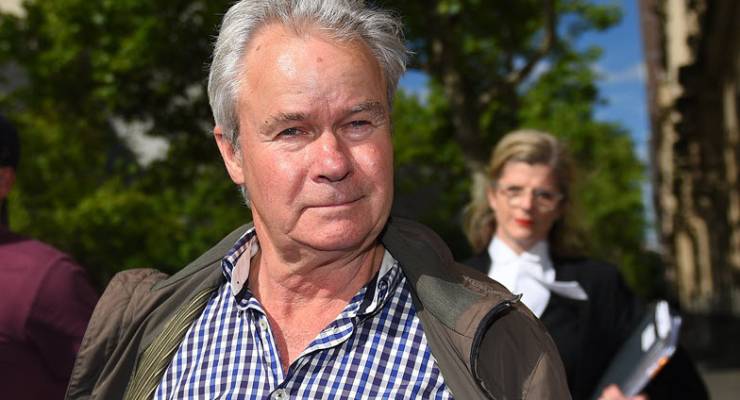
Art dealer Peter Gant
Art dealer Peter Stanley Gant and art conservator Mohamed Aman Siddique were found guilty by a jury of forging and selling Brett Whiteley paintings to the value of $3.6 million in May 2016. But last month — in an extraordinary reversal of fortunes — the pair’s convictions were quashed on appeal, when the Crown conceded that the jury’s verdict was likely to be “unsafe”, bringing to an end a fascinating and episodic courtroom drama.
The Victorian Court of Appeal yesterday released its judgment in the matter and it’s a gripping read. The 32-page document reads like the script of a great art-crime movie, and raised the issue that the Crown’s case was put in a way that may have caused the jury to make the wrong decision:
“We have not been privy to the reasons which led the prosecutor to approach their evidence as she did. Nor can we guess at them. The result was … the jury were left effectively to speculate about the import of the evidence of these two critical witnesses. Such speculation, which the prosecutor effectively invited by the manner in which she couched her closing address to the jury, may well have contributed to the error in the jury’s verdict.”
“It is not necessary to pursue this possibility. Nor is it useful now to contemplate how the Crown case, or the police investigation, might have been conducted differently. The critical point is that, as we have explained, the jury were bound to reject the Crown case as advanced before them, and to acquit both the accused.”
As was the case during the trial, Wendy Whiteley featured prominently in the judgment. In recent days, her dissatisfaction with the verdict has been widely reported. The Court of Appeal described some of the issues that the defence put forward in respect of her evidence:
“She was described by Gant’s counsel as an ‘advocate’ for Brett Whiteley, rather than an expert.”
“Wendy Whiteley accepted that she had thought that another Lavender Bay painting with a window, similar to Through the Window, Lavender Bay, was not a genuine Whiteley until she was shown a ‘sad’ photograph of Whiteley standing next to the painting. The defence contended that this meant that her opinion as to the genuineness or otherwise of the Lavender Bay paintings was essentially worthless.”
“Her evidence that Whiteley never did underdrawings on Lavender Bays was challenged. A clip from a film produced in 1989 showed Whiteley doing underdrawings, albeit not on paintings from the Lavender Bay series.”
“Wendy Whiteley also stated that Whiteley’s use of heroin was not conducive to creating great art. The defence relied on this to support the view that these paintings were created by Whiteley while he was under the influence of drugs.”
However, it may come as some small consolation that the ruling made no finding on the provenance of the work.
“It will be seen that our reasoning in no way depends upon this Court making any affirmative finding that the paintings offered for sale were painted by Brett Whiteley. To be clear, we make no such finding. Nor are we equipped to do so.”
You can read the full judgment here.







Crikey is committed to hosting lively discussions. Help us keep the conversation useful, interesting and welcoming. We aim to publish comments quickly in the interest of promoting robust conversation, but we’re a small team and we deploy filters to protect against legal risk. Occasionally your comment may be held up while we review, but we’re working as fast as we can to keep the conversation rolling.
The Crikey comment section is members-only content. Please subscribe to leave a comment.
The Crikey comment section is members-only content. Please login to leave a comment.